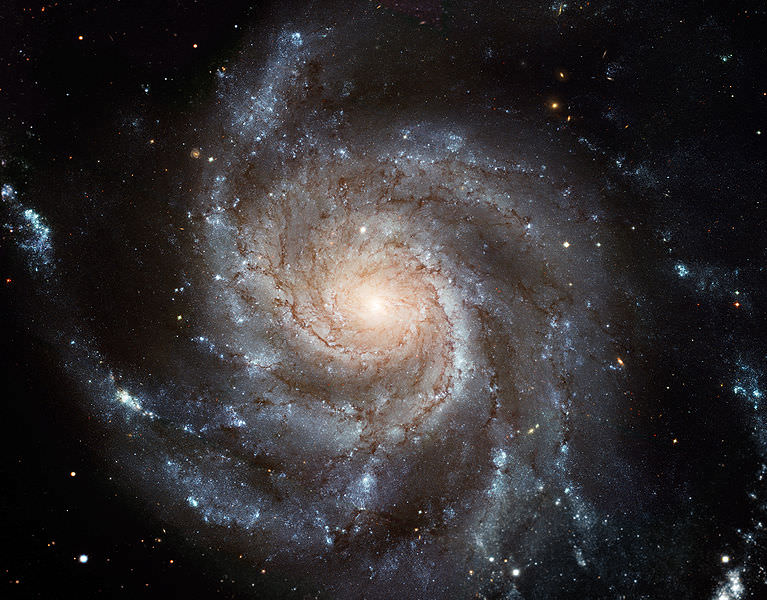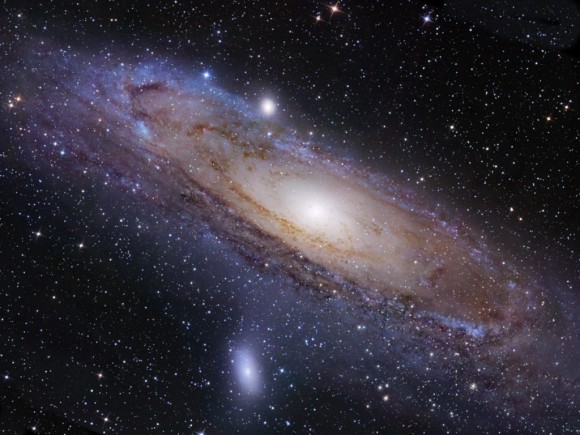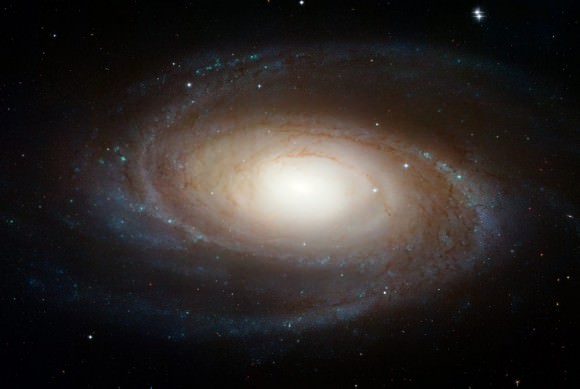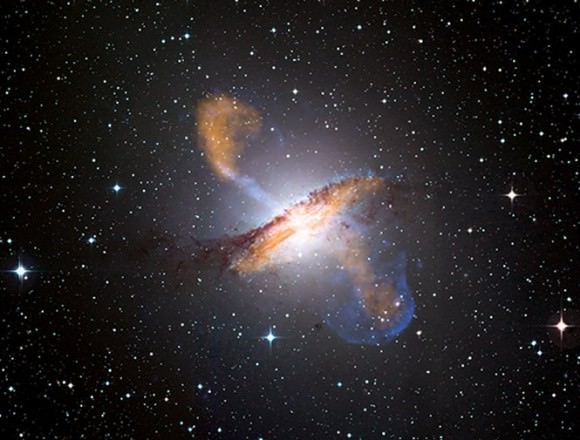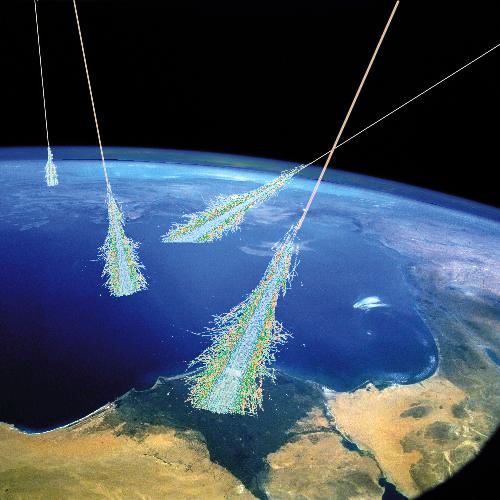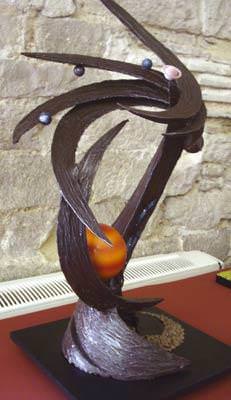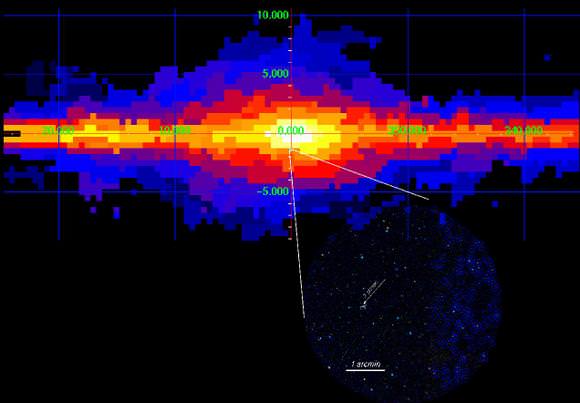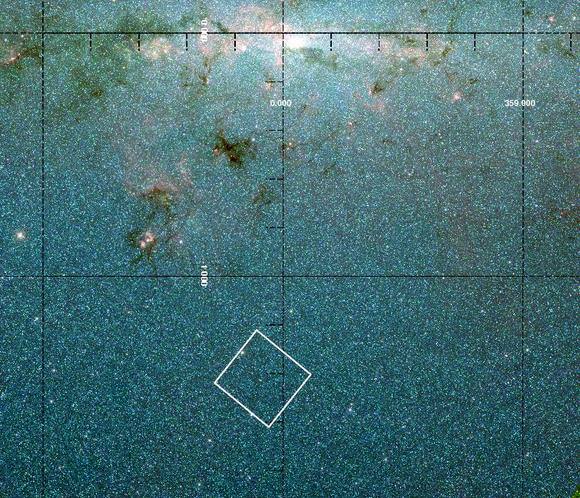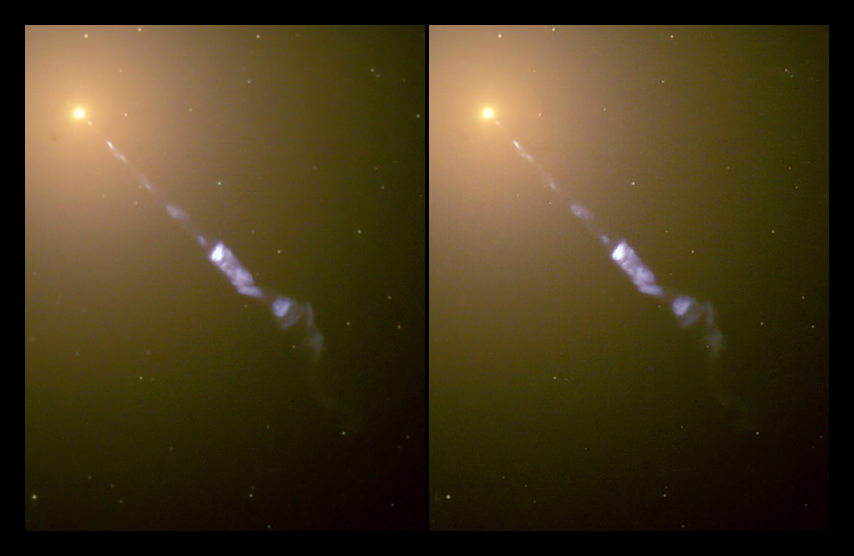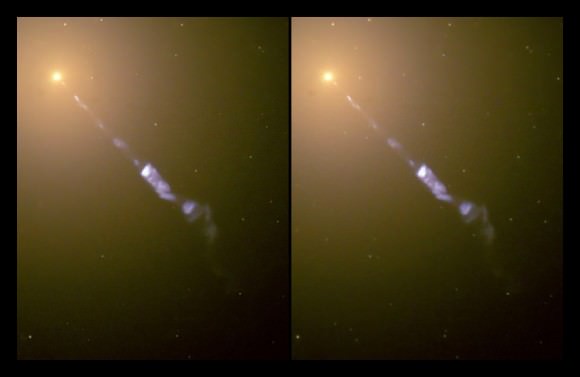Greetings, fellow StarGazers! Let’s start the weekend off right by taking on a lunar club challenge and then kicking back to enjoy yet another spring meteor shower! (After all, if April showers bring May flowers, you do know what May flowers bring, don’t you? That’s right… Pilgrims!) Now that I’ve got you at least smiling, take out your binoculars, too… Because there’s two asteroids that are ripe for plucking – Hebe and Ceres. If you feel like being a little more serious about your lunar studies, why not do a little photographic map work? Just match the picture to what you see in the eyepiece and log your studies! Are you ready? Then I’ll see you in the back yard…
 Friday, May 1, 2009 – This date is a rather special one in history. In 1543 on this date, Copernicus published and distributed the ‘‘ The Little Commentary ,’’ which described his heliocentric beliefs. In 1949, Gerard Kuiper discovered Nereid, a 150-kilometer-wide satellite of Neptune. It’s so distant from the planet that it requires almost one Earth year (360 days) to complete an orbit! At magnitude 18.7, Nereid is beyond the detection point of most average telescopes but can be ‘‘seen’’ using long exposure charge coupled AQ1 device (CCD) image stacking devices. Other sights that can’t be seen are the Van Allen Radiation Belts of our Earth, the discovery of which was announced in 1958 in this day’s copy of the Washington Evening Star. Thanks to James A. Van Allen’s use of the data from the Explorer I and Pioneer III space probes, we know that Earth’s magnetosphere contains concentrations of electrically charged particles. Say Happy Birthday to American astronaut M. Scott Carpenter, who was born on this date in 1925 and was one of the original seven Mercury astronauts to reach space in 1962.
Friday, May 1, 2009 – This date is a rather special one in history. In 1543 on this date, Copernicus published and distributed the ‘‘ The Little Commentary ,’’ which described his heliocentric beliefs. In 1949, Gerard Kuiper discovered Nereid, a 150-kilometer-wide satellite of Neptune. It’s so distant from the planet that it requires almost one Earth year (360 days) to complete an orbit! At magnitude 18.7, Nereid is beyond the detection point of most average telescopes but can be ‘‘seen’’ using long exposure charge coupled AQ1 device (CCD) image stacking devices. Other sights that can’t be seen are the Van Allen Radiation Belts of our Earth, the discovery of which was announced in 1958 in this day’s copy of the Washington Evening Star. Thanks to James A. Van Allen’s use of the data from the Explorer I and Pioneer III space probes, we know that Earth’s magnetosphere contains concentrations of electrically charged particles. Say Happy Birthday to American astronaut M. Scott Carpenter, who was born on this date in 1925 and was one of the original seven Mercury astronauts to reach space in 1962.
Tonight’s outstanding lunar feature will be crater Maurolycus , just southwest of the three rings of Theophilus, Cyrillus, and Catharina. This Lunar Club Challenge spans 114 kilometers and goes below the lunar surface by 4,730 meters. Be sure to look for Gemma Frisius just to its north!
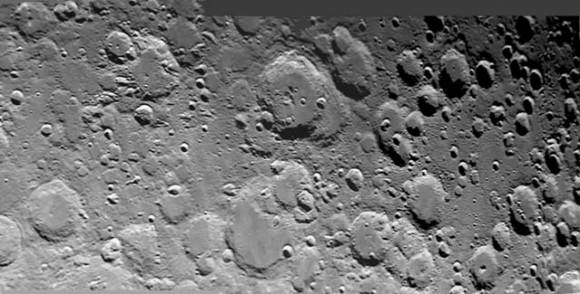
Now, relax and enjoy the peak of the Phi Bootid meteor shower, whose radiant is near the constellation Hercules. The best time to view most meteor showers is around 2:00 a.m. local time, but you may have good success watching for these meteors as soon as the Moon westers. The average fall rate is only about 6 per hour, but it’s a great way to spend a spring evening out under the stars!
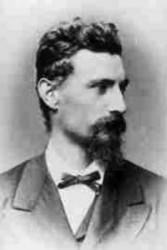 Saturday, May 2, 2009 – Today, let’s start with the 1868 birth on this date of Robert Williams Wood. Although Wood’s primary research was on sound waves, he devised a ‘‘zone plate’’ that could replace the objective lens of a telescope! He also improved the diffraction grating, did research in spectroscopy, and made photographs showing both infrared and ultraviolet radiations. Also, take a moment to note the 1925 passing of the star cataloger, Johann Palisa. Palisa remains the most successful visual discoverer in the history of minor planet research, discovering 122 asteroids with a 600 telescope and no photographic plates!
Saturday, May 2, 2009 – Today, let’s start with the 1868 birth on this date of Robert Williams Wood. Although Wood’s primary research was on sound waves, he devised a ‘‘zone plate’’ that could replace the objective lens of a telescope! He also improved the diffraction grating, did research in spectroscopy, and made photographs showing both infrared and ultraviolet radiations. Also, take a moment to note the 1925 passing of the star cataloger, Johann Palisa. Palisa remains the most successful visual discoverer in the history of minor planet research, discovering 122 asteroids with a 600 telescope and no photographic plates!
 Why not salute his achievements by looking for the asteroid Hebe, which reaches opposition tonight? Hebe is the 13th largest asteroid by mass and the 5th brightest to observe. If you collect meteorites and have an H chondrite, chances are good you have a physical piece of Hebe, since it is thought to have contributed up to 40% of all recovered chrondites! Hebe is now coming in at 6th magnitude and given its prime location shouldn’t make it fairly easy for even those with just binoculars to find this cool asteroid.
Why not salute his achievements by looking for the asteroid Hebe, which reaches opposition tonight? Hebe is the 13th largest asteroid by mass and the 5th brightest to observe. If you collect meteorites and have an H chondrite, chances are good you have a physical piece of Hebe, since it is thought to have contributed up to 40% of all recovered chrondites! Hebe is now coming in at 6th magnitude and given its prime location shouldn’t make it fairly easy for even those with just binoculars to find this cool asteroid.
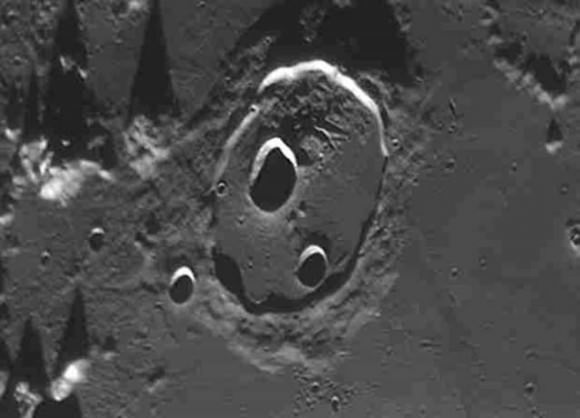
Now, let’s have a look at the Moon! Tonight’s challenges are craters Cassini and Cassini A, which come into view just south of the black slash of the Alpine Valley. The major crater spans 57 kilometers and reaches a floor depth of 1,240 meters. Your assignment, should you decide to accept it, is to spot the central crater A. It only spans 17 kilometers, yet drops down another 2,830 meters below the primary crater’s floor!
 Sunday, May 3, 2009 – How about starting the day with the bizarre and unusual? In 1375 BC, the oldest recorded total solar eclipse occurred—if we can believe eighth century Babylonian records! If you have a green laser pointer, or a telrad, you might want to wish Alfred Kastler a happy birthday. Born on this date in 1902, the physicist was very interested in what happened to atoms when excited by light or radio waves. Kastler developed a method called ‘‘optical pumping,’’ where atoms enter a higher energy state. Optical pumping is what makes your laser work!
Sunday, May 3, 2009 – How about starting the day with the bizarre and unusual? In 1375 BC, the oldest recorded total solar eclipse occurred—if we can believe eighth century Babylonian records! If you have a green laser pointer, or a telrad, you might want to wish Alfred Kastler a happy birthday. Born on this date in 1902, the physicist was very interested in what happened to atoms when excited by light or radio waves. Kastler developed a method called ‘‘optical pumping,’’ where atoms enter a higher energy state. Optical pumping is what makes your laser work!
Tonight notice just how close bright Regulus is to the Moon! If you’d like to try your hand at asteroid Ceres, you’ll find it approximately another 15 degrees north of the ‘‘Little King.’’
Tonight let’s take a long Moonwalk together and do some major crater exploration. Try using mid-range magnification in your telescope and see how many of the craters in this photograph you can identify!.
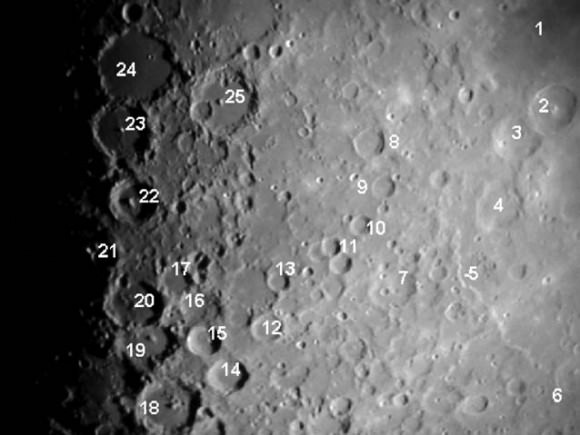
Ptolemaeus area: (1) Sinus Asperitatis, (2) Theophilus, (3) Cyrillus, (4) Catharina, (5) Rupes Altai, (6) Piccolomini, (7) Sacrobosco, (8) Abulfeda, (9) Almanon, (10) Taylor, (11) Abenezra, (12) Apianus (13) Playfair, (14) Aliacensis, (15) Werner, (16) Blanchinus, (17) Lacaille, (18) Walter, (19) Regiomontanus, (20) Purbach, (21) Thebit, (22) Arzachel, (23) Alphonsus, (24) Ptolemaeus, and (25) Albategnius.
Until next week? Ask for the Moon… But keep on reaching for the stars!
This week’s awesome images are (in order of appearance): M. Scott Carpenter (credit—NASA), Maurolycus (credit—Alan Chu), Johann Palisa (historical image), Hebe Chart (Your Sky), Cassini (credit—Wes Higgins), Alfred Kastler (historical image) and the Ptolemaeus area (credit—Greg Konkel). We thank you so much!


